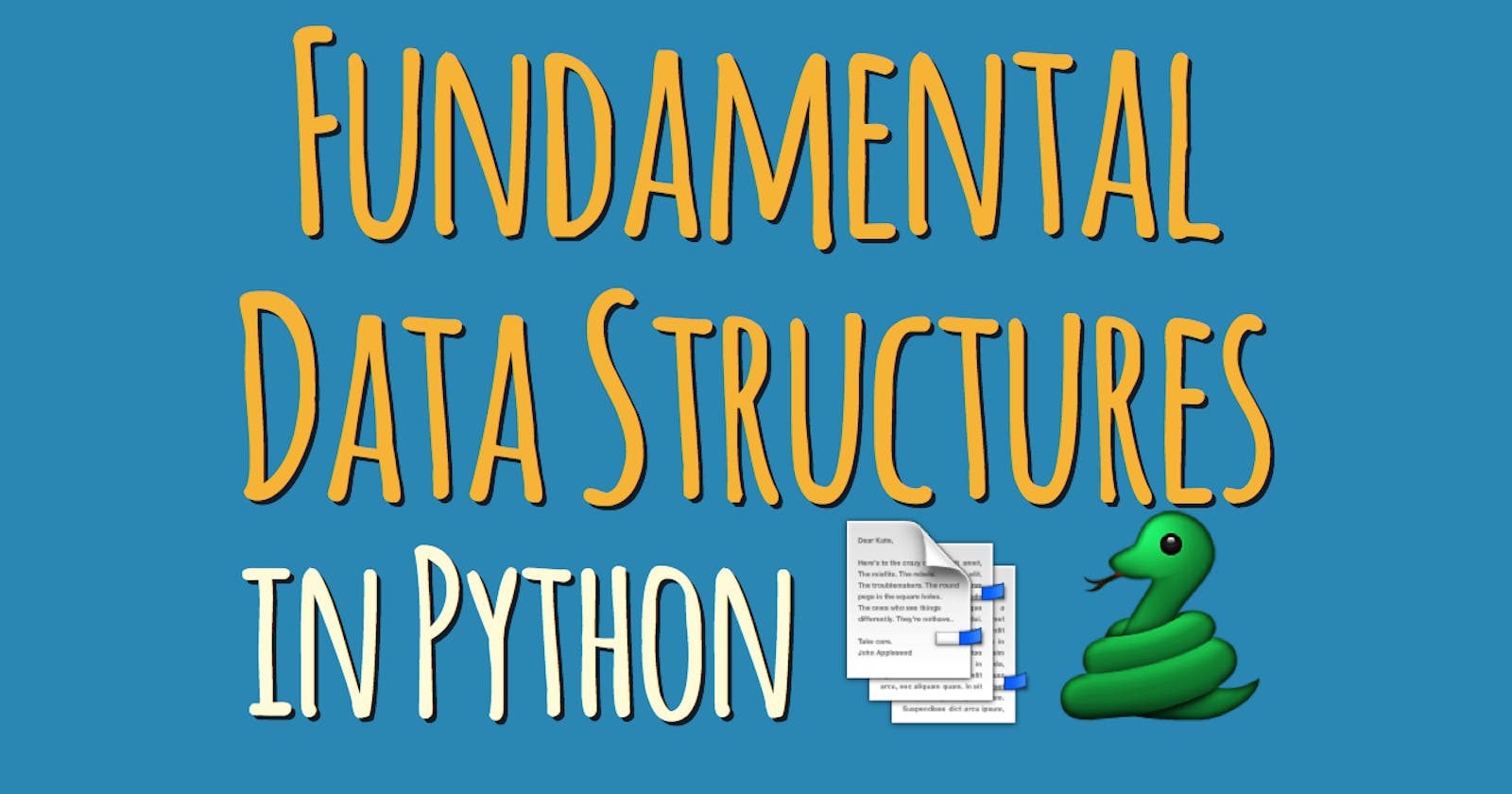Python is a modern, easy-to-learn, object-oriented programming language. It has a powerful set of built-in data types. If you are new to python language, then this blog is will help you learn. This blog contains basic linear data structure of python.
- List: It is a linear data structure in Python that is a mutable, or changeable, ordered sequence of elements. They are heterogeneous, meaning that the data objects need not all be from the same class and the collection can be assigned to a variable.
eg: List=[1,2,3,’a’,True]
Operation performed on the list:
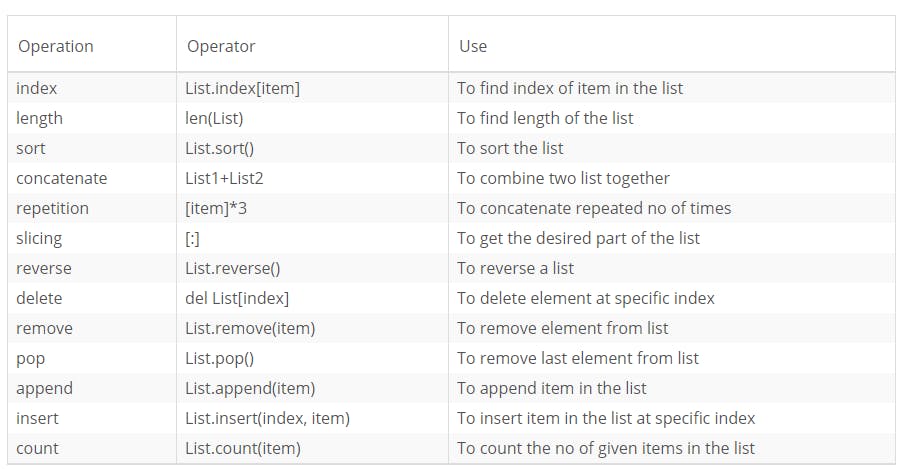
- Tuple: They are very similar to lists in that they are heterogeneous sequences of data. The difference is that a tuple is immutable, like a string. A tuple cannot be changed. Operations performed on tuple are same as that of the list except the assignment operation as we cannot change items in the tuple.
eg: Tuple = (2,True,4.96)
- Sets: A set is an unordered collection of zero or more immutable Python data objects. Sets do not allow duplicates and are written as comma-delimited values enclosed in curly braces. The empty set is represented by set(). Sets are heterogeneous, and the collection can be assigned to a variable.
eg: set={1,2,3,’a’,True}
Operation performed on the set:
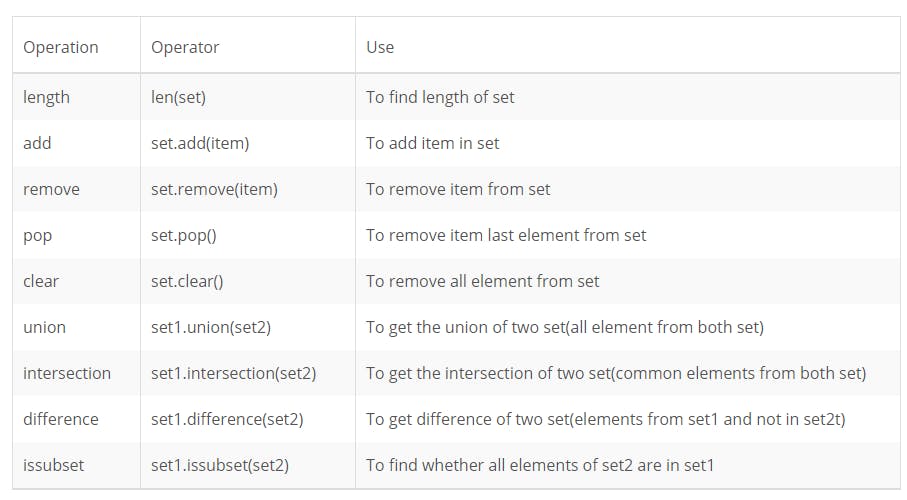
- Dictionary: Dictionaries are collections of associated pairs of items where each pair consists of a key and a value. This key-value pair is typically written as key: value. It is unordered structure.
eg: dicti={1:’a’;2:’b’:3:’c’}
Operation performed on the dictionary:
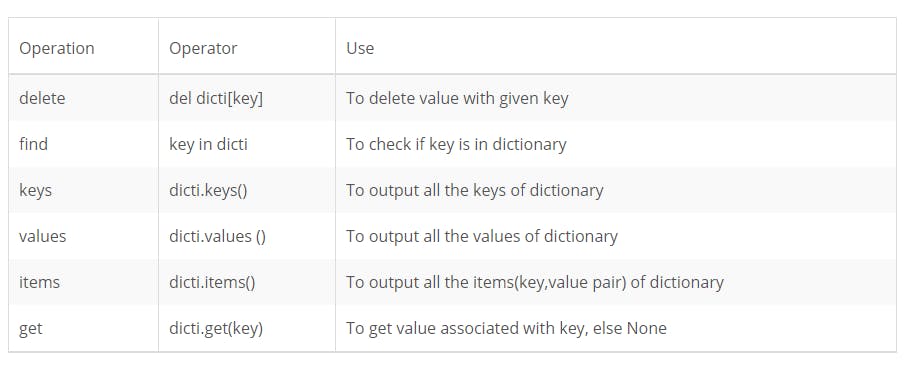
- String: They are sequential collections of zero or more letters, numbers and other symbols. We call these letters, numbers and other symbols characters.
eg: s=’abcbd’
Operation performed on string:
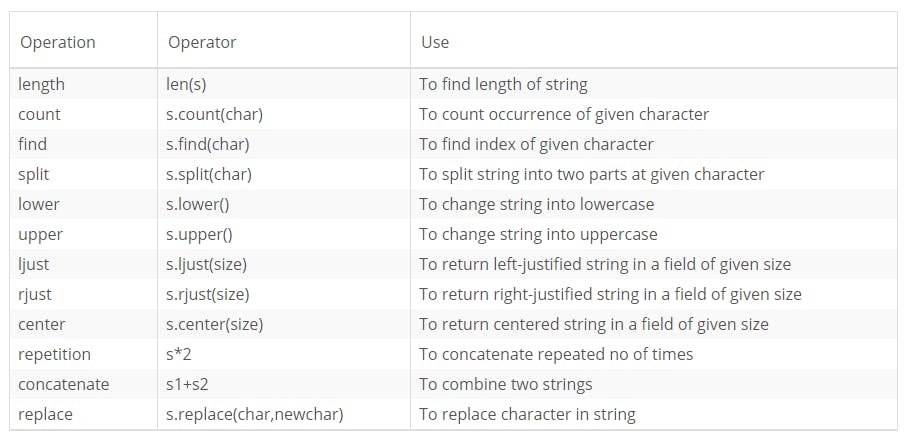
Hope you find this article helpful. Check out my next article, to learn about other data structure in Python. Until then, keep learning!
